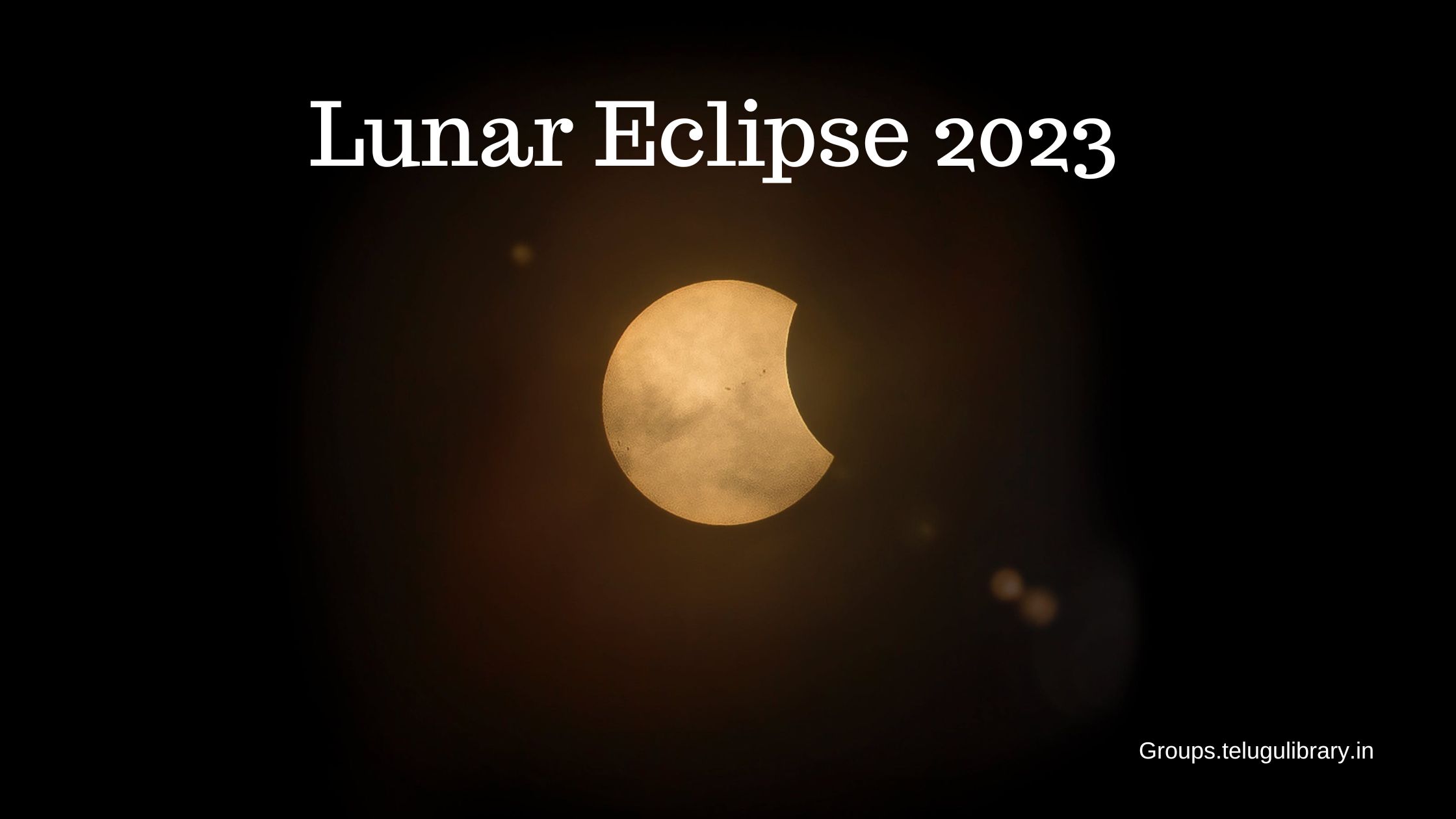Lunar Eclipse 2023 Full Moon…
Chandra Grahan 2023:
In 2023, a Lunar Eclipse is scheduled to occur in India on the night of October 28. It will commence around 11:31 PM and reach its peak at 1:05 AM on Sunday. This is the moment when the Earth’s shadow will cover the moon, creating a remarkable celestial display. It serves as a reminder of the astonishing occurrences in the night sky.
Lunar Eclipse 2023 Updates:
In October 2023, we are in for a unique astronomical treat – two captivating celestial events in quick succession. Only a fortnight after a dazzling solar eclipse, prepare for a lunar eclipse, also known as Chandra Grahan.
At 11:31 PM, the lunar eclipse begins, with the moon gradually moving into Earth’s shadow. Then, around midnight, at 1 AM, the moon becomes enveloped in the darkest part of Earth’s shadow known as the umbra.
This enchanting lunar performance is not confined to a single location; people throughout India can witness it. The grand stage extends far beyond the borders, as individuals in various regions across Asia, Europe, Africa, and even North America can partake in this extraordinary celestial dance.
As you gaze skyward tonight, remember that you are actively participating in a cosmic waltz. Our moon momentarily conceals itself within the Earth’s shadow, a sight that has captivated humans for centuries. It serves as a reminder of the interconnectedness of our planet with the expansive celestial universe, offering a chance to appreciate the marvels of space right from our terrestrial vantage point.
History of Lunar Eclipses:
Lunar eclipses have intrigued and bewildered humanity throughout history, resulting in various cultural, scientific, and mythological interpretations. Here is a brief history of lunar eclipses:
Ancient Observations: In the early annals of astronomy, ancient civilizations such as the Babylonians, Greeks, and Mayans meticulously documented lunar eclipses. They often perceived these celestial phenomena as omens or messages from the divine, believing they foretold significant events, whether auspicious or foreboding.
Early Theories: In ancient Greece, the philosopher Anaxagoras (circa 500-428 BCE) made one of the earliest recorded attempts to scientifically elucidate lunar eclipses. He accurately deduced that the Earth casts a shadow on the Moon, though his ideas did not achieve widespread acceptance in his time.
Ptolemaic Explanation: The ancient Greek astronomer Claudius Ptolemy (circa 90-168 CE) expanded upon Anaxagoras’ concepts and proposed a geocentric model of the universe. Within this framework, he expounded on the mechanics of lunar eclipses, ideas that endured for centuries.
Copernican Revolution: The 16th-century heliocentric model of the solar system presented by Nicolaus Copernicus ushered in a new understanding of lunar eclipses. In this model, where Earth and the Moon orbit the Sun, lunar eclipses occur when the Earth comes between the Sun and the Moon, casting its shadow upon the lunar surface.
Lunar Eclipse 2023…
Modern Understanding: With the evolution of observational astronomy, our comprehension of lunar eclipses has grown more precise. We now recognize that lunar eclipses transpire when the Earth, Moon, and Sun align in a straight line, with the Earth obstructing the Sun’s light from reaching the Moon. The degree of alignment can produce partial, total, or penumbral lunar eclipses.
Cultural Significance: Lunar eclipses have held cultural importance in diverse societies. For instance, in Hindu culture, lunar eclipses are regarded as inauspicious times, prompting the observance of specific rituals and precautions to avert negative consequences. Conversely, other cultures have celebrated lunar eclipses as potent and transformative occurrences.
Scientific Exploration: Lunar eclipses persist as subjects of scientific exploration. They offer opportunities to examine the Earth’s atmosphere, as the refracted sunlight responsible for the reddish hue of the Moon during a total lunar eclipse can unveil insights about our planet’s atmosphere and climate.
In contemporary times, lunar eclipses are admired for their aesthetic charm and provide stargazers and astronomers with occasions to observe a captivating celestial event. They function as a testament to our ever-evolving comprehension of the cosmos and our enduring fascination with the night sky.
Indian constitution New challenges Notes With Questions and Answers
“Distinctive Features of Indian Federalism: Student-Friendly Question & Answers”
What are Fundamental Duties class 9-Question and Answers
What do you mean by Directive Principles of State Policy?
Understanding Fundamental Rights in the Indian Constitution – Exam Study Material
“Tribute to Sarvepalli Radhakrishnan: The Philosopher-President Who Shaped India’s Future”
What is India’s uniform civil code? History of Uniform Civil Code India and Questionnaire
7th schedule of constitution of India
